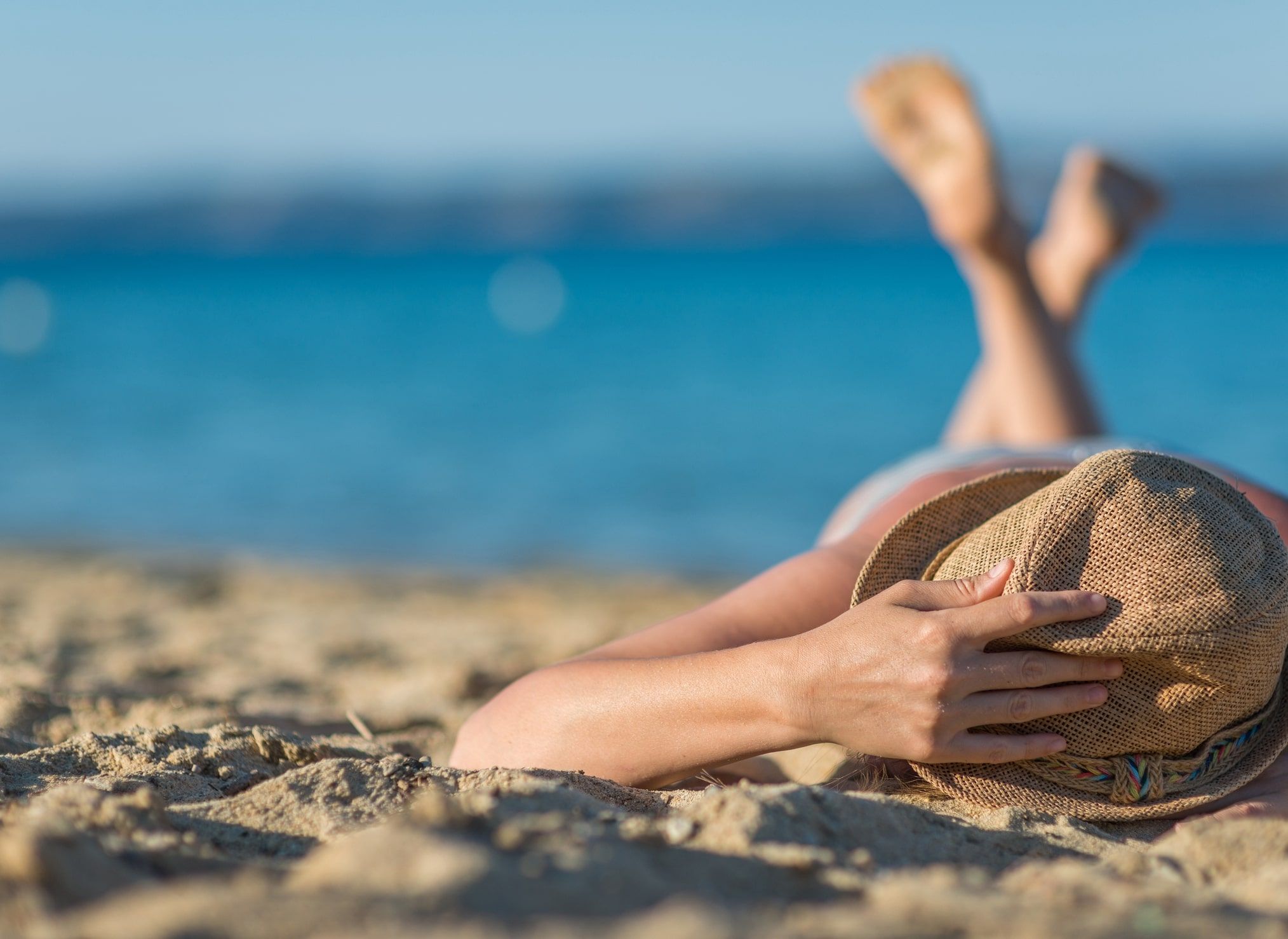Featured
What REALLY Happens When Skin Peels from Too Much Sun?
Find out how you can have “fun in the sun” and stay skin-healthy.

By Charlene Bollinger
August 4, 2025
Fun in the summertime sun is what we long for all year. Sometimes, however, we can overdo it, resulting in sunburn and peeling skin.
What is actually going on when this happens, what can you do about it, and how can you avoid it in the first place?
Keep reading to find out how you can have “fun in the sun” and stay skin-healthy!
Your Skin’s Natural Regeneration Process
Did you know that your skin cells regenerate every 2-3 days? It’s true! All organs regenerate over time, but the skin is the “leader of the pack” in how quickly it does so. This is why you have a completely new layer of skin on your body every 40 to 56 days. (1)
What a testament to the resilience and self-repair mechanisms of the skin and the whole body!
At the same time, this process also shows how uniquely delicate the body, and especially the skin, can be. Hormonal imbalance, nutrient deficiency, overexposure to toxins, and the aging process can delay regeneration, stop it altogether, or create malfunctions at the DNA level that can cause skin conditions and cancers like melanoma.
One of the biggest reasons why slow regeneration and DNA mutations occur in the skin is overexposure to the harmful UV rays of the sun. In fact, according to a meta-analysis done at the University of Arizona in 2023, having five or more incidents of severe sunburn as a young adult (between 15-20 years of age) increases the risk of non-melanoma skin cancer (basal cell carcinoma, or BCC, and squamous cell carcinoma, or SCC) by over 65%. It raises the risk of melanoma by 80%. (2) Common signs that you have a severe sunburn include a bright red color to your skin, blistering, and skin peeling. (3)
What Your Skin is Telling You When It Peels
In a nutshell, skin peeling tells you that too much UV rays have damaged cells in the epidermis and are now dead. The actual peeling (as well as flakiness) happens because the body is shedding the dead skin cells as it replaces them with new, living ones.
If you do get a severe sunburn, skin peeling is usually an indication of healthy cellular regeneration happening. However, this kind of burn is also what you want to avoid in order to lower your risk of skin cancer and other skin conditions.
In addition, keep in mind that skin peeling can happen for other reasons besides sun exposure. (4) Some common non-UV ray reasons why a person may experience peeling, flaky skin (usually accompanied by inflammation, redness, and itchiness) include:
- Allergic reactions and contact dermatitis
- Edema (fluid retention and swelling)
- Common skin conditions like eczema, psoriasis, rosacea, and Athlete’s foot
- Infections, such as Staphylococcus or Streptococcal (group A)
- More rare skin conditions such as Stevens-Johnson syndrome, Seborrheic dermatitis, and Pemphigus
- Non-skin inflammatory conditions like Kawasaki disease or peeling skin syndrome. (5)
When your skin peels because of sunburn, it may last for several days (depending on burn severity). Allowing your body to “do its thing” and take as long as it needs to peel completely will help your skin to heal completely as well. Picking at the skin or forcibly removing the dead skin in another way can increase irritation as well as lead to infection and scarring.
The Consequences of Sunburn
Accidents happen. We all get careless and fall asleep in the sun, only to wake up and find that we’ve gotten a sunburn. Our bodies are resilient, and odds are you are going to be okay if this happens to you a few times during your lifetime.
Consistently and repeatedly exposing the skin to too much sun, however, can lead to some pretty hefty consequences in the immediate future as well as long-term. I already talked about the cancer risks of severe sunburn, but there are other consequences as well. Any kind of repeated sunburn (even repeated mild sunburn) can lead to premature aging of the skin. It can also lead to wrinkles, sagging skin, red veins on the affected area (including the face), spots, and increased freckling.
Sunburn can also exacerbate existing skin conditions. For those with psoriasis, the Koeber effect is when lesions and “hot spots” develop on parts of the body other than normal during a flare-up. Sun exposure can kickstart the Koeber effect and other signs of a flare-up for those with psoriasis. (6)
Non-skin related complications of sun overexposure include dehydration, eye damage, and - in severe cases - sun poisoning. The symptoms of sun poisoning are very much like the flu and include chills, nausea, and sometimes fever. (7)
The #1 Thing You Can Do to Prevent Peeling
The absolute best thing you can do to avoid skin peeling caused by sunburn is to take measures not to get too much sun! Here are some tips that can help:
- Set a timer to remind yourself when you have had enough sun so you can limit exposure.
- If you feel a nap coming on when you are sunbathing, go inside to snooze so you don’t drift off and get too much sun.
- Carry a cover-up, wrap, or light long-sleeved shirt and a hat with you when you go to the beach, the lake, or your back patio. Cover up when you have had too much.
- Use an all-natural, zinc oxide-based sunscreen if you need to.
How Nature (& CHARLÍS) Can Help
Finally, some sun exposure is actually a really good thing!
Exposure to the sun is how our bodies synthesize vitamin D. It can also be very grounding and calming for the nervous system. In addition, as anyone with skin conditions like psoriasis probably already knows, getting just a little bit of sun can be helpful for lowering inflammation.
The key is not to get too much. Remember that the ideal time and duration for healthy sun exposure is about 20 minutes. For vitamin D synthesis, be sure to expose as much of your skin as possible between 10 a.m. and 2 p.m. - and, again, for no more than 20 minutes!
And if you overdo it and get a sunburn, remember that CHARLÍS is here! The absolute best natural substance for soothing sunburn is aloe vera. This amazing succulent contains cooling properties that can calm sunburnt skin and lower inflammation. It also contains antioxidants and other phytonutrients, which both help the skin retain moisture and boost the healing process.
This is why aloe vera is a key ingredient in many of our most popular formulas, including the CHARLÍS Revitalizing Daily Moisturizer!
References:
subscription
join our exclusive beauty community
Elevate your beauty journey with personalized recommendations and stay connected with a community that shares your passion for self-care. Subscribe now and embark on a beauty adventure with us!
